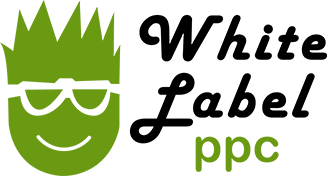Last year, Search Engine Land’s Local Consumer Review Survey found that 85% of consumers use the Internet to find local businesses. In September, web retailers saw their fastest growth in 13 years. According to e-Retailer web sales rose by 13 percent over August and were 20 percent higher than last September. In November, WWW Metrics reported that on average, businesses that have both a physical location and online presence have reported an average of 23 percent growth in online buying (versus 9 percent growth for online only businesses with no brick ‘n mortar location.) In the beginning of December, researcher comScore Inc. reported that Cyber Monday sales reached a new record spending of almost $2 billion—making it the heaviest web-spending day ever for the fourth consecutive year.
These numbers clearly indicate that people are getting more and more comfortable turning to the web to not only find the products and services they need, but to purchase them…which means more than ever you need to have a strong online presence. Of course, with so many choices, it can be confusing on where and how to spend your resources for online advertising. With that in mind, this month I’d like to share a recent case study posted by Search Engine Watch.
This study was on a B2B ecommerce business. They wanted to test advertising channels to determine what would boost sales the most. First they looked at the current landscape for search engines. About 80 percent of the real estate on your computer screen above the fold is dedicated to ads, which doesn’t leave much room if you aren’t advertising. So they tested Pay Per Click (PPC). They found that by using PPC, website visits increased 17 percent. That isn’t too surprising since PPC is designed to drive traffic to your website.
However, what you might find surprising is that they also found that when they used PPC, their sales increased by 136 percent.
This result was for all visitors and sales. In other words, the total number of sales made included sales made from all advertising channels, not just from PPC. This is because, like most businesses, they were using more than one type of advertising media to attract visitors and make sales.
Of course, it is not uncommon for a business to use more than one type of advertising. For example, a consumer might find out about your business through PPC first, causing them to visit your website as a result, yet not buy during that first visit. Instead, this potential consumer might sign up for your newsletter to check you out and determine whether or not they like what they see… then return to your website to buy at a later time after reading your newsletter a few times.
Because this is common practice, this study analyzed all the channels used to make the sale to see what channel gave the biggest value. The results? They found that purchases that were touched by PPC at some point had a 21 percent higher average sale than purchases that were not touched by PPC. To be certain of their results, they turned off their PPC at the end of their test.
Here’s where it gets interesting. When they paused their PPC, the total site visitors held steady. The study states that there could be many reasons for this such as increased awareness to the brand due to the previous PPC, seasonality, etc. However, another thing happened. When PPC was paused, both online orders and buyers per visit fell by 23 percent.
Interesting, because you might think that if your traffic was the same, your sales would stay the same, but it didn’t. When they dug deeper, they found that the conversion rate for PPC traffic was higher than the rest of the traffic. In fact, PPC traffic converted three and half times better than non-PPC traffic.
I’ll be the first to admit that the choices for advertising can be overwhelming. Plus, as a small business owner myself, I can appreciate wanting to get the biggest bang for your buck. This study clearly demonstrates that PPC can not only increase your site visitors, but it can also increase your sales. It also means that revenue per sale for PPC visitors is more valuable than non-PPC visitors. Plus, it shows that PPC traffic converts better than non-PPC traffic.
To your online success,
John Pfeiffer

